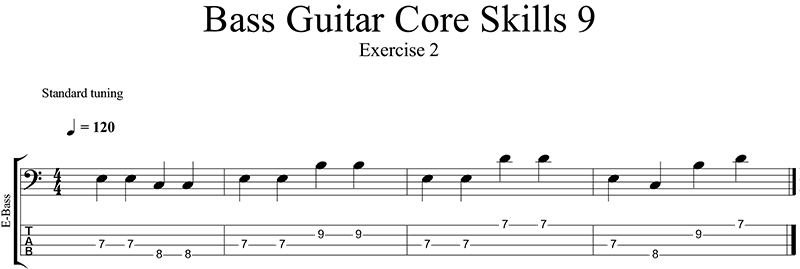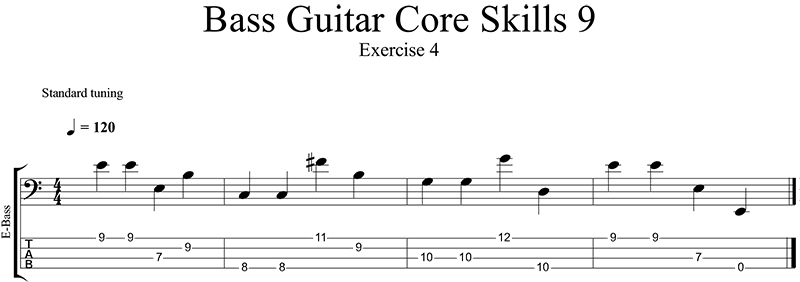
Bass Lesson Nine - String Crossing

String Crossing Overview
Getting the correct string crossing technique is very important. Getting it right will improve your playing and the sound of your bass lines.
Good string crossing technique means that when playing a bass line you can cleanly move from one string to the next. Going from one string to the next may seem straight forward at first however things can get a little tricky when you start to skip 1, 2, or even more strings.
If you don’t have good string crossing technique you will have less control over the rhythmic accuracy, tonal consistency, and dynamics of notes produced. You need to be aware of all of these aspects to gain a controlled sound.
Rhythmic Accuracy
You may find that in order to have time to get to the next string or note you need to rush the previous one. This is a bad habit that you should try to avoid. Practising with a metronome will help, starting slow and then speeding up as your technique improves.
Tonal Consistency
We looked at Tone in lesson 4. In the lesson we discovered the different tones that a bass can produce by altering the plucking hand position.
The tone of notes can alter as you swap between strings and the finger used to pluck the string. It’s best to keep a consistent tone when playing and this is achieved by playing notes on each string in a similar position between the bridge and neck. However if you do want to alter the tone of individual notes you need to be sure you do it in a controlled way.
Dynamics
Dynamics refers to the range of the volume between the loudest and the quiet notes. It’s best to keep dynamics controlled and consistent when playing, so try to keep the volume of each string and the volume produced by each plucking finger even. You may want to have a broader range in the dynamics used in a bass line but you must again have good control when doing this.
Exercise
Play through the exercises ensuring that you are considering the 3 factors we have discussed for good string crossing technique, rhythmic accuracy, tonal consistency, and dynamics of notes.
Try to get good technique for each of these factors whilst playing the bass lines slowly and then speed up as you improve. Playing along to a metronome will help with this.
Things to think about:
• You are achieving good rhythmic accuracy
• You are producing a consistent tone
• You have good control over the dynamics of the notes produced by each plucking finger and by each string
Exercise 1
Easy Tab

Standard Tab

Exercise 2
Easy Tab

Standard Tab

Exercise 3
Easy Tab

Standard Tab


